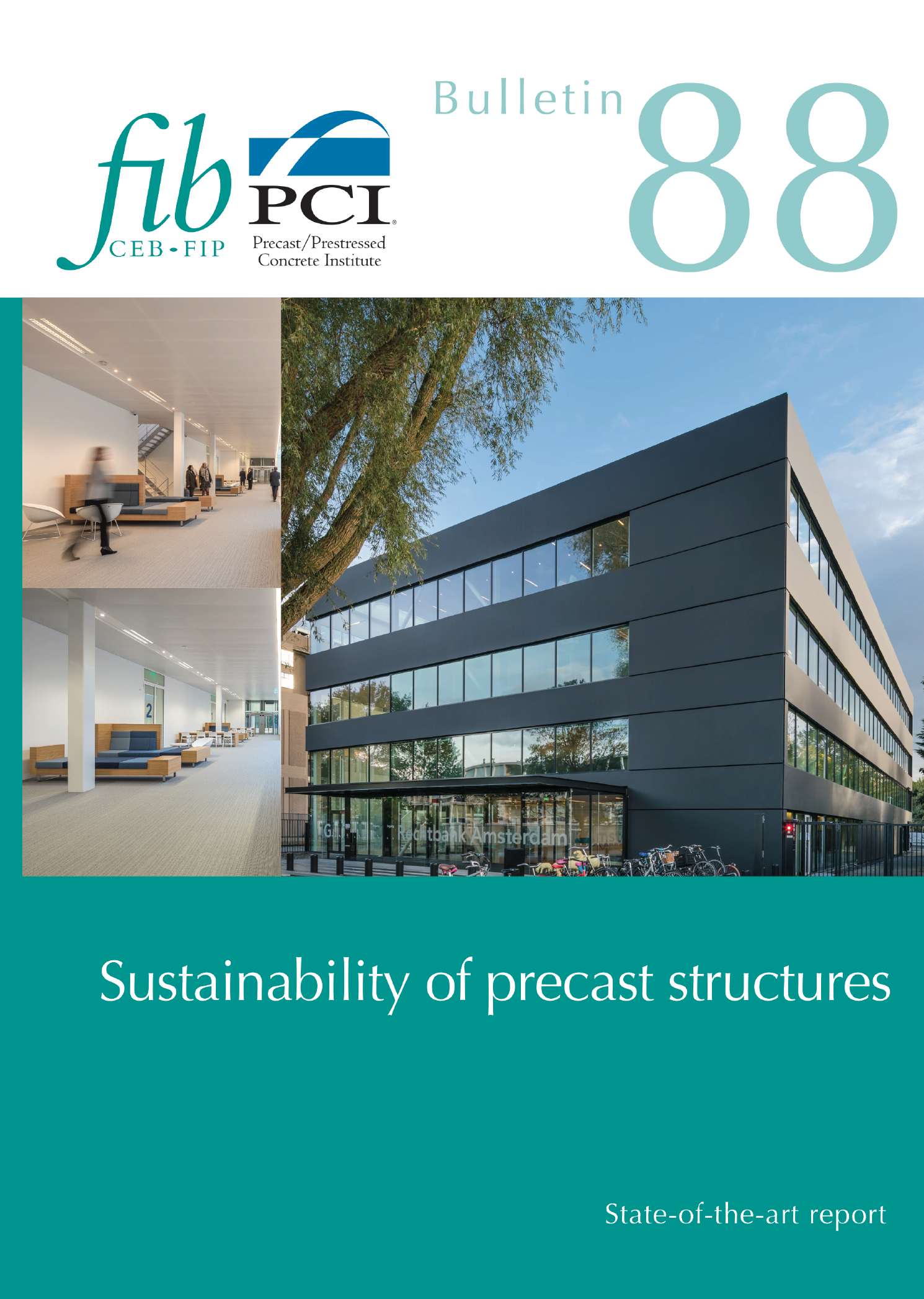Sustainability of precast structures (PDF)
FIB BULLETIN NO. 88
Title: Sustainability of precast structures
Year: 2018
Pages: 153
Format approx. DIN A4 (210x297 mm)
ISBN: 978-2-88394-128-1
DOI: doi.org/10.35789/fib.BULL.0088
Abstract:
Sustainability is a crucial concept. Sustainability was first introduced in the fib by creating a Special Activity Group under the convenorship of Prof Sakai. This group encouraged and helped all fib commissions to create their own groups dealing with sustainability. The fib Commission 6 “Prefabrication” took up this challenge and created a Task Group called “Sustainability of Structures with Precast Elements” in 2012. The group was created as a joint group with PCI (Precast Concrete Institute of USA), with the then-active fib Commission 3 “Environmental aspects of design and construction”, and the fib’s SAG8 on Sustainability. Therefore, this Bulletin 88 is a joint publication between PCI and fib.
The aim of the work was to gather and study the most recent work that has been developed regarding sustainability – and more particularly Life Cycle Assessment - of structures in which precast elements are used. The final aim of the group would be to provide recommendations for the study and assessment of structures built with precast elements. It will cover all aspects of this kind of structure, from planning, design, execution, use, maintenance and remedial activities to deconstruction, reuse, demolition and recycling.
The fib holds sustainability as a high priority, which triggered the creation of a new Commission 7 “Sustainability” during the 2015 fib commissions reorganisation. This commission has been chaired since then by Prof Hájek. Sustainability concepts were already introduced in the Model Code 2010 and are a key part in the elaboration of the Model Code 2020.
Experts from many parts of the world contributed to this fib Bulletin 88 which gives the document a broad overview of sustainability sensibilities across different continents.
Bulletin 88 starts with a description of the importance of environmental concepts and developments in the world today and the reason why sustainability is a crucial concept that will be even more important in the future. The document then focuses on the different advances of standards and regulations that have been developed or are in the process of being implemented. ISO, European regulations, North American regulations, Brazilian implementation in real precast companies and the developments of the fib Model Codes have been considered in this bulletin.
After that, the bulletin examines life cycle aspects of precast structures, taking former fib bulletins as a basis. Then, it moves on to an in-depth study of specific sustainability aspects of precast structures.
Then, the bulletin deals with the special methodologies and tools that are available around the world to handle sustainability in general and with precast structures in particular. A selection of tools is described in this chapter. The Task Group also developed proposals about how to deal with the sustainability of precast structures. Some of the proposals are described conceptually in the text.
The final chapter compiles several case studies or examples of sustainability applications of precast structures. The examples differ and are grouped by category: buildings, infrastructure and special works.
The task group continues to work on developing other documents that will focus on the detailed practical application of some of the sustainability models described in this document.
The Commission is grateful to all the Task Group members for this accomplishment, particularly to David Fernández-Ordóñez, who convened and led the Group successfully.
Stef Maas and Ned Cleland
Download the copyright page (= list of authors) as a PDF file.
Download the table of contents as a PDF file.







